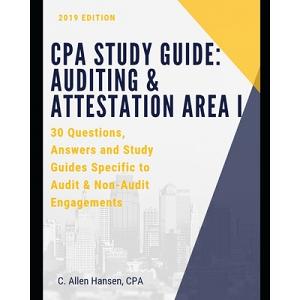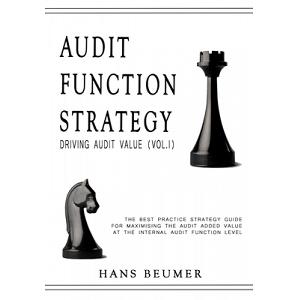Payment terms are set out in the model
grant agreement for the project. Payment is spread out over the
lifetime of the project and is subject to a series of reports.
- First pre-financing Projects receive pre-financing totaling 30% of the EU grant within 45 calendar days from the date when the signed grant agreement and all the mandates are officially received by the EACI.
- Second pre-financing The coordinator may request a second pre-financing payment if the first 30% of the total budget have been used. Total pre-financing may not exceed 60% of the EU grant. This request must be accompanied by a report including a technical and financial part and proof of transfer of the funds made available under the first pre-financing agreement.
- Final payment Once the project has been completed the coordinator may request the final payment, the balance. The request must be accompanied by the final technical and financial report.
The purpose of the audit is to certify that all
cost incurred comply with national legislation, accounting rules and SAP/CP.
The audit will cover the use of funds from all project sources of financing
including partner's expenses.
The Commission can organise additional reviews and request additional information to the reports, and what is more important they can at any time during the project and up to five years after closure decide to carry out an audit, financial and/or technical.
The European Court of Auditors audits EU finances. Its role is to improve EU financial management and report on the use of public funds. It was set up in 1975 and is based in Luxembourg. The Commission's Directorates General, Executive Agencies and Joint Undertakings exchange any relevant information in order to coordinate their audit efforts. The Commission has also increased the frequency of joint audits with the Court of Auditors.
Project
participants should be ready for an audit by the Commission making sure that
they have the required supporting documents available up to 5 years after end
of the project. It is important that they pay close attention to the
eligibility criteria of costs before submitting their cost claims.
Any claimed
ineligible costs will be recovered or deduced from the next payment. Moreover,
any systematic error may give rise to extrapolation of the audit results onto
the non-audited grant agreements or the non-audited periods. Besides these
corrections other measures or sanctions may apply.
Some of the direct factors/variables that can lead
to an audit:
- Problems with the Coordinator: (not prompt; not clear; company has difficulties; person has difficulties)
- Problems with key partners
- Problems with deliverables: (late; poor quality; do not comply with DoW; non-existent; plagiarism)
- Blind chance
Indirect factors:
- The institution/partner is involved in many projects
- The institution/partner has very large budget(s)
- The institution/partner has noticeable administrative difficulties
- There are severe scientific/technical difficulties
- The institution/partner is selected 'out of the pot'
The following documents will be requested during an
audit and must be saved in a well-structured order for five years after project
closure:
- Personnel costs: employment contracts (or other independent/legal justification of personnel costs claimed), Ledgers/Accounts, payroll records (salary slips), time sheets, detailed breakdown and justification of the productive hours, denominators used for the calculation of hourly rates, proof of payment
- Overheads: in case the actual overhead model was used: full documentation concerning the calculation of the overhead costs and the back-up documentation thereto, analysis, reconciliation and summary of the final breakdown of overhead costs (by category of expense, charged to the project(s) subject to audit)
- Consumables/equipment/other: invoices, proof of payments, in case of rented equipment - rental contract, records concerning the computer usage, if applicable
- Third party assistance: Sub-contracts, invoices, verification of payments, original deliverables from the subcontractors, evidence of own internal management and supervision procedures to confirm completion of work required to specification needed and reasonableness of costs claimed in connection herewith
- Travel and subsistence: invoices, mission approval forms, report, minutes of the meetings, participants of the meetings, e-mail documentation, etc.
- Bank statements - in case of the Coordinator, bank statements relating to the payments of EC contribution and the distribution to the beneficiaries
- General Ledger/management: salient extract and reconciliations of costs claimed back to underlying accounting records/general ledger to facilitate easy and swift verification of costs claimed and their eligibility
- Auditor certificate: copies of any auditor certification statements issued with a claim for cost reimbursement
A typical audit is lasting for 2-5 days at the premises of the beneficiary involved in the audit. After that, it usually takes another 2-5 months for the auditors to prepare the Draft Audit Report. Before sending it to the EC, the beneficiary can include its comments to the report. The majority of the audits with no further financial consequences (i.e. financial
mismanagement, overcharging, etc.), but some of them will lead to the next stage: Sanctions.
Sanctions
If any irregularities are found committed by a beneficiary (infringement of a provision of Community or national law or any breach of a contractual obligation) during an audit or any project review, four types of sanctions are foreseen:
- Exclude from the Grant Agreement – Exclude the beneficiary from the Grant Agreement
- Exclude from Grant Agreement – Exclude the beneficiary from other Framework Programme Grant Agreements and from agreements under other Community programmes
- Ineligibility – Declare the beneficiary ineligible to participate in future Framework Programme activities, and in programmes under other Community policies
- Liquidated damages - The Community, with the aim of protecting its financial interests, is entitled to claim liquidated damages from a beneficiary who is found to have overstated expenditure and who has consequently received an unjustified financial contribution from the Community
Participating in any project is an excellent experience and can be very
beneficial for any organisation, but it is a lot of work and requires huge
investments on the side of the beneficiary. In order to succeed, having the
proper skills and abilities to help avoid any problems that may arise is
essential
Ms.Grabiella experience and though:
What if the auditors come with a pure paper-based approach? They
are not interested in the results, the impact, the evidence of the work done,
but they are interested in the invoices, contracts, the certificates, delivery
notes, insurance papers, the signatures, the stamps, etc...
- I fully understand the economic check, the need to see that all administrative issues were tackled, but what about the result-based monitoring approach that the Commission is focusing on?
- How much should a subcontracted auditing company follow their own approach for an audit and how much they should consider the process that the Audit unit of the European Commission is following?
- The beneficiaries follow the rules of the Commission, so they are collecting and archiving all evidence documentation on the achieved results. What if in a small organisation the delivery notes are not kept in the accounting department?
- Does it matter if there is a printed copy kept of the material delivered or shall they go back to the supplier and ask for an additional paper, a certification that the material has been indeed delivered?
- What if in a major organisation the catering invoice does not have an order form or a contract and/or a certificate on delivery attached?
- Does it matter if the manager has a nice conference proceedings printed with photos proving the catering was done and of course the invoice is properly booked? Shall they search for the e-mail communication between the catering company and the event organising department to prove the service has been ordered?
- Which one is the more efficient auditing method to prove the eligibility of the costs? Showing the e-mail about ordering a translation service and the contract or showing the actual translated report linked to the invoice?
I think the newly initiated audits are broadcasting a wrong message. "Keep
all papers and make sure all papers have a back-up paper."
Read More:

